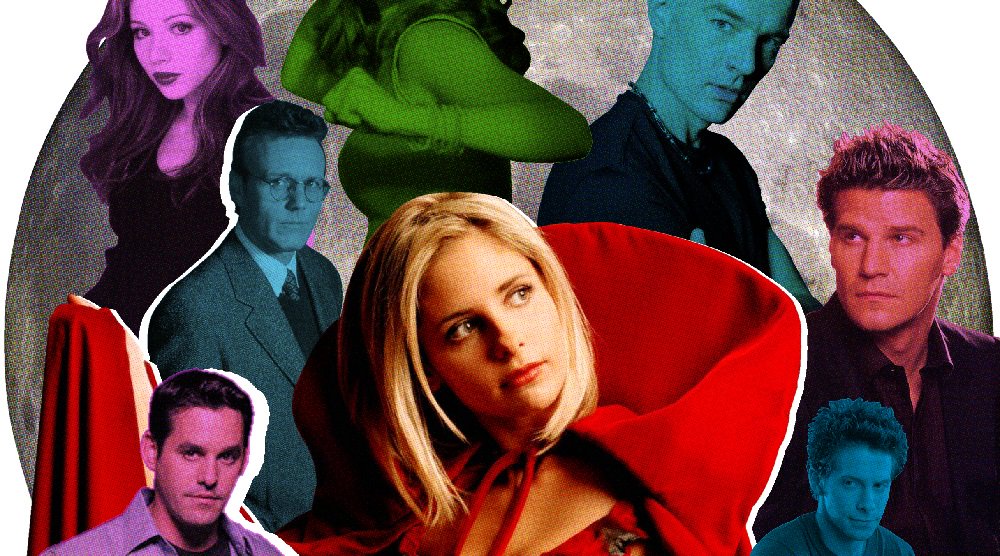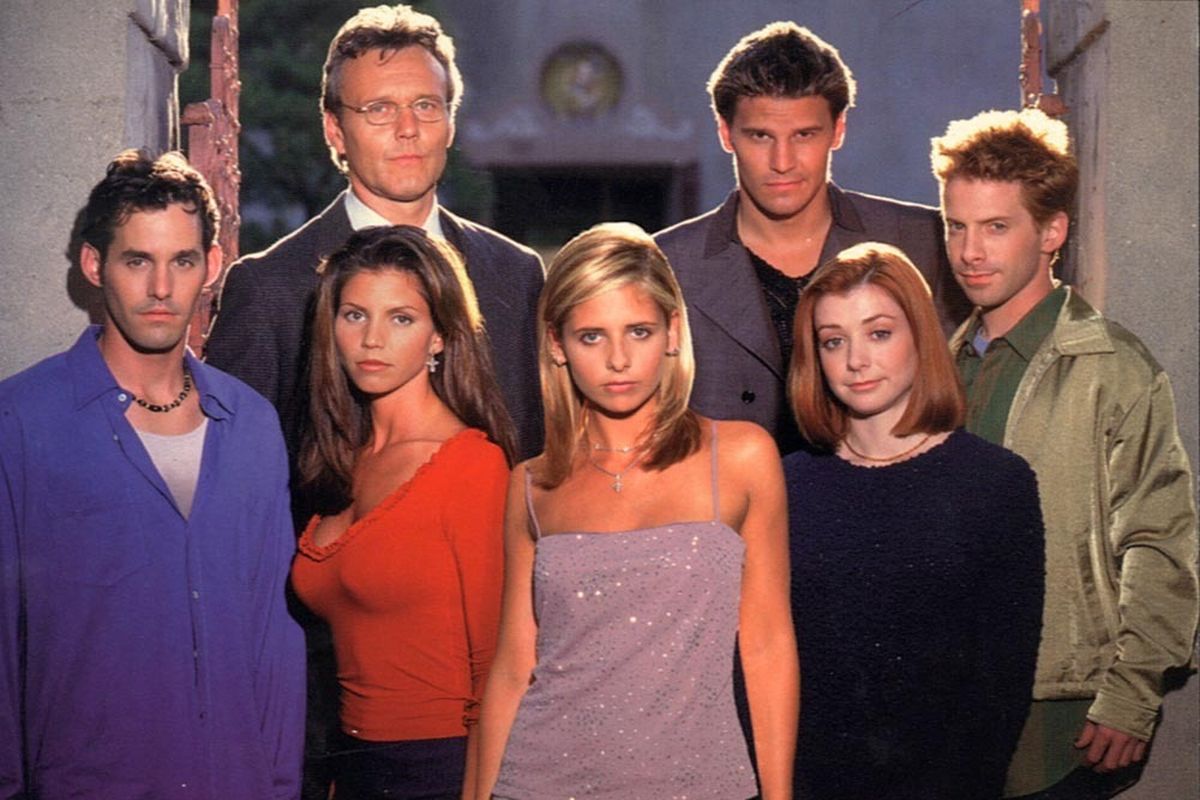Buffy the Vampire Slayer: Why LGBTQ people are still suckers for the high school horror
As Buffy Summers and the Scoobies struggled to come to terms with their true natures, so did we, writes Juno Dawson.
By Will Stroude

This article first appeared in Attitude issue 284, Summer 2017.
Let’s not get it twisted: Buffy the Vampire Slayer IS queer TV.
Exhibit A: the season 2 finale, ‘Becoming’, features Buffy (Sarah Michelle Gellar) coming out to her clueless mother as a vampire slayer.
“Have you tried not being a slayer?” Joyce asks, before issuing Buffy with the ultimatum all LGBT+ kids fear: “If you walk out that door, don’t ever come back.”
Buffy does walk out and, like too many LGBT+ youths, ends up, for a period, homeless.

While Buffy herself is not queer, her story clearly resonated with a generation of LGBT+ kids who are this year celebrating the show’s 20th anniversary.
It’s very relatable: Buffy never chose to be the way she is — her status is her birthright. All Buffy wants is to be an ordinary girl, manoeuvring high school, boyfriends and home life. Unfortunately for her, she has demons, both literally and figuratively, to combat.
Show creator Joss Whedon made an art form of taking everyday kids with teen angst (a pejorative I add), and turning them into flesh-and-blood monsters.
Puberty and growing up became metaphors in all sorts of ways: Oz (Seth Green), a werewolf, can’t control his rage; Willow (Alyson Hannigan), a witch, becomes addicted to magic; Dawn (Michelle Trachtenberg), a mystical entity, struggles to feel real.
Although Whedon had flirted with “being yourself” through metaphor, by the fourth season, it was time to stop dallying. Buffy’s geeky best friend Willow initially meets Tara Maclay (Amber Benson) in the magnificent silent episode Hush.
Over the course of the season, the girls — through the medium of witchcraft — become increasingly close until it’s abundantly clear they’re more than just coven-buddies.
“I am, you know,” Tara tells Willow in a tender moment, “… yours.”  From there, Willow and Tara became one of the most iconic lesbian couples in TV history.
From there, Willow and Tara became one of the most iconic lesbian couples in TV history.
Willow cares for Tara when evil god Glory robs her of her mind; they raise Dawn together when Buffy is (temporarily) dead; and Tara attempts to cure Willow of her magic addiction.

Hannigan and Benson had wonderful chemistry, culminating in a risqué-for-teen-TV song-and-dance number during the show’s standout musical episode “Once More With Feeling.” (I told you it was queer TV.)
During the song ‘I’m Under Your Spell’ Willow clearly goes down on Tara — a scene which was originally trimmed by censors for the BBC Two tea-time airing. However, predicting the trend for killing off lesbian characters (The 100, The Walking Dead, Pretty Little Liars), Tara was brutally despatched in order to move the ‘Dark Willow’ story along.
Fans, it’s safe to say, were not over-enamoured with Willow’s new girlfriend, Kennedy (Iyari Limon), but it’s encouraging that Willow was allowed to maintain her lesbian identity post-Tara.

For a generation of Nineties teens (or today’s thirty-somethings), Buffy — and Willow and Tara, in particular — represents a cultural moment in our adolescence.
As Buffy and her friends struggled to come to terms with their true natures, so did we.
Buffy the Vampire Slayer is currently available to stream on Amazon Prime in the UK.
